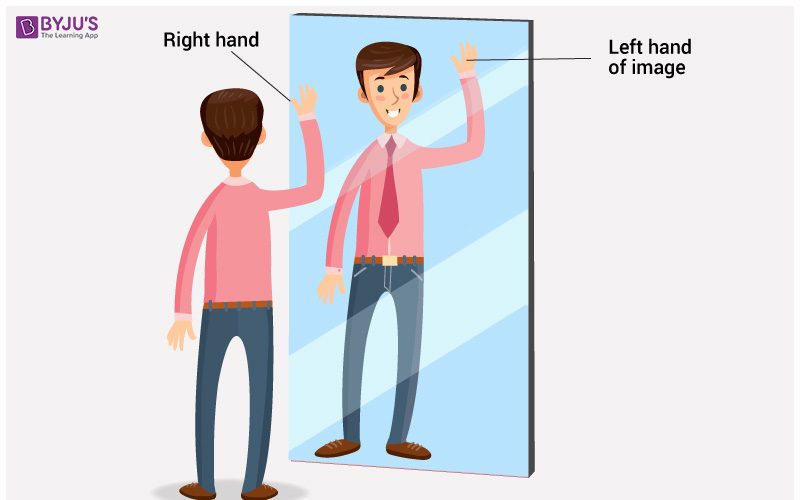(Dun) smoke and mirrors

Whenever I introduce Lady Macbeth to a class it is just a matter of moments before a student will ask, ‘Sir – what’s Lady Macbeth’s first name?’
And when I respond that she doesn’t have one, she is just known as Lady Macbeth, they inevitably then ask: ‘Why?’
It’s a question I’ve not always had a satisfying response to. The best I could do in the past was to explain that her lack of a first name is likely to be a consequence of the inferior status of women in Jacobean and medieval Scottish society – she is Macbeth’s wife, and that’s all that mattered – her status in relation to her husband, Macbeth.
But this of course misses the very point of Lady Macbeth who, as a literary character, is primarily a vehicle for meaning, and does not necessarily represent a person at all – a common misunderstanding students of literature (and teachers) can run into.
This very notion that characters are representations – not of people, but ideas – came to mind recently whilst reading some of Matthieu Pageau’s book The Language of Creation in which he challenges a materialist view of the bible, instead exploring the fascinating symbolism at work in its stories.
It reminded me of Lady Macbeth in particular. And while considering Shakespeare’s allusion to Genesis in Macbeth is nothing new, what with its theme of betrayal and its striking serpent imagery, it is interesting to see how such allusions help us understand the role of Lady Macbeth symbolically.
What is the significance of Adam and Eve in the biblical story of Genesis?

Adam’s main task in the Garden of Eden is to name the animals created by God. In this sense, Adam is a pair of eyes to observe and define the world. A profound point to note is that while Adam can survey all that is around him, he does not have the vantage to observe himself.
Eve is created by God as a peer to observe Adam in order that he may have an awareness, not just of the creatures that surround him, but also of himself. In this way, Eve represents a form of feedback, like a mirror.
When considering how this story is set in paradise (by definition, a place in which all of one’s needs are met) Eve’s function here as a second pair of eyes – a means for Adam to understand the truth about himself – is presented as being of fundamental necessity.
The significance of this role is underlined even further when Eve departs from Adam to tend to the Garden of Eden alone. This separation leaves her vulnerable to Satan who persuades her, as a further act of independence from Adam, to eat from the Tree of Knowledge. The fall of man, therefore, is a direct consequence of Eve’s abandonment of her role as observer.
How is this like the relationship between Macbeth and Lady Macbeth?

Much like Eve, Lady Macbeth symbolises a mirror that Macbeth may – upon reflection – see himself as he truly is, warts and all. Her name, ‘Lady Macbeth’ implies such doubling.
But unlike the Garden of Eden, medieval Scotland is no paradise. It is set after the fall of man and Eve’s abandonment of her role as provider of truth. As a ‘mirror’, Lady Macbeth is not an entirely identical reflection of Macbeth, then, but like a literal mirror, provides Macbeth with an unfortunately inverted view of himself.
The ‘back to front’ nature of her character brings to mind the witches’ utterance in Scene 1: ‘fair is foul and foul is fair’. The play’s famous line does not simply repeat ‘Fair is foul’ but inverts its grammar so it is heard backwards, a form of antimetabole.
It is written into the language that Macbeth – as is all mankind, according to the story of Genesis – doomed to be misled by feedback that opposes what is true.
How is Lady Macbeth an inversion of Macbeth?
The most obvious of Lady Macbeth’s inversions is of course her sex: Lady Macbeth is a female character, an inversion of Macbeth as male. But her gender is back to front too: Lady Macbeth is typically masculine (her courage, independence, leadership, and assertiveness) while Macbeth is typically feminine (his cowardice, dependence, spectatorship, and weakness). As he admits to himself in Act 1 Scene 7 he has ‘no spur to prick the sides of [his] intent’ – privately a rather pathetic figure, standing in stark contrast to his more public reputation as ‘brave Macbeth’).
Soon after, however, when confronted by Lady Macbeth’s masculinity, Macbeth sees in her an inverted view of his true cowardly self, someone who may ‘[dare] do all that may become a man’. It is this which brings about the play’s major complication, as it was for Adam – the temptation to misunderstand one’s true self and give in to falsehood.
Is anyone telling the truth?
The ‘golden opinions’ of Macbeth’s prowess in battle, heralded in the Captain’s speech, are feverish, fantastical, and unreliable as a result. Their ‘golden’ colour, suggesting light, lack substance.
As with Malcolm’s waffly description of the Thane of Cawdor’s execution – which he did not witness himself, but insists unconvincingly that he ‘spoke with one that saw him die’ – the Captain and Malcolm, alongside all the noblemen, are not telling Duncan the whole truth.
Rather, as summarised by the Porter in Act 2, everyone is an ‘equivocator’: speaking ambiguously to keep the truth concealed. It is precisely this issue Duncan himself describes when he laments that ‘there’s no art to find the mind’s construction in the face.’
What is Shakespeare saying more broadly?
In Hamlet, which Shakespeare wrote around 1599, just a few years before Macbeth, the Prince of Denmark states that the moral purpose of theatre is to ‘hold a mirror up to nature’. When instructing the players who will be performing for his stepfather, in Act 3 Scene 2, Hamlet tells them to:
Act 3 Scene 2, Hamlet
‘Suit the action to the word, the word to the action, with this
special observance, that you o’erstep not the modesty of nature:
for any thing so o’erdone is from the purpose of playing, whose
end, both at the first and now, was and is, to hold as ’twere the
mirror up to nature: to show virtue her feature, scorn her own
image, and the very age and body of the time his form and
pressure.’
Here, Hamlet echoes classical authors, who insisted that drama be a form of truth, not frivolous entertainment. Playwrights and players should strive to present action that is true to life, without exaggeration or distortion, without bombast or excessive sentimentality.
In this ‘theatrical mirror’ we see our virtues and vices reflected back at us in their true shape: such is the theatre’s moral function.
Noticeably, a similar idea is dismissed by Macbeth at the play’s end once he hears of Lady Macbeth’s death, the ultimate abandonment. His is the view that ‘Life’s but a walking shadow, a poor player that struts and frets his hour upon the stage’. But this is cynical, sentimental, and consequently rings false. The theatre’s moral function, to reflect us back to ourselves, is out of kilter here: the player is ‘poor’, strutting and fretting immodestly. The imagery of darkness, of shadows and extinguishing candles, imply how Macbeth’s demise is now down to his inability to see any truth at all: neither of himself nor his surroundings.
As with Adam, Macbeth’s terrible fate is a consequence of the flawed feedback loop that curses all humankind after the fall. The play is highlighting the absolute importance of seeing clearly, but also warns us not to be too hopeful.
Beyond everything, we never get this sort of thing right. Such is our curse.

